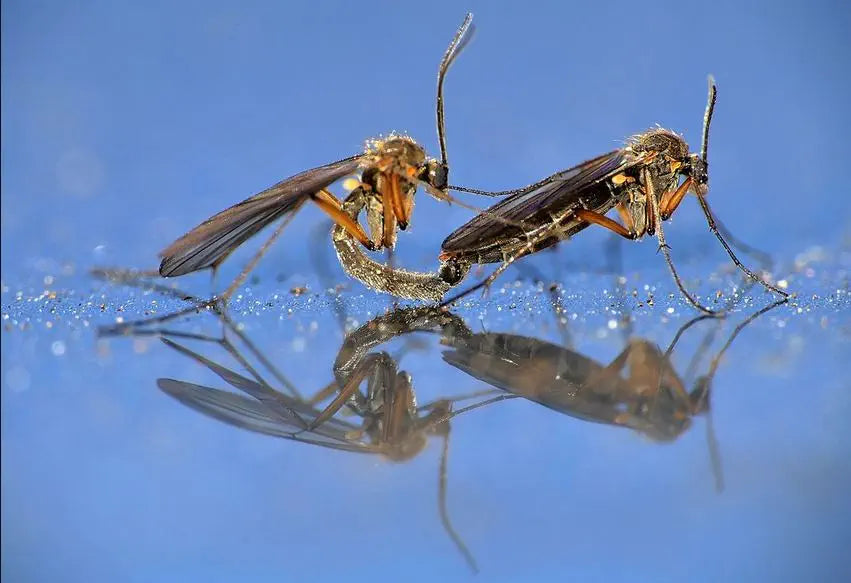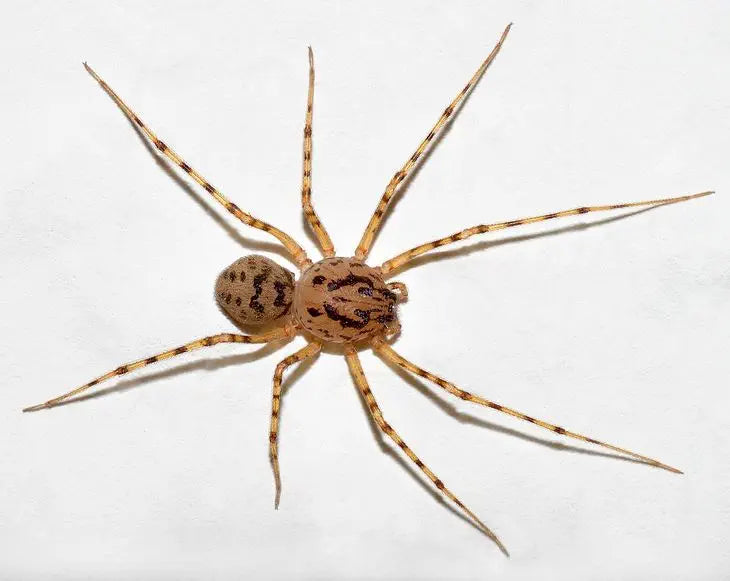Fighting silverfish naturally: How to get rid of them in an environmentally friendly way
Silverfish ( Lepisma saccharinum ) are often considered a mere nuisance, but they can indicate deeper problems in your home. These light-shy, scale-covered insects thrive in damp, dark areas—preferably bathrooms, kitchens, or basements. There, they cause long-term damage to paper, books, or wallpaper. The presence of silverfish can also be a sign of excessive humidity or even mold growth. This makes it all the more important to act promptly—with targeted measures that are environmentally friendly and effective.
An overview of the pest
With a body length of approximately 8 to 12 mm, their metallic sheen, and striking tail appendages, silverfish appear almost like tiny fish. They are nocturnal and hide in cracks or under furniture during the day. Their diet consists of sugary and starchy substances – such as paste, paper, skin flakes, or mold spores. Particularly high humidity accelerates their development and reproduction, which can lead to rapid multiplication under optimal conditions.
Life cycle and behavior
What many people don't know: Silverfish can live up to eight years. Reproduction occurs via spermatophores, which are deposited by the male and ingested by the female. The eggs are then laid in small cracks or crevices – preferably at temperatures around 25 to 30 degrees Celsius. The hatched young resemble adult insects and shed their skin several times until they reach sexual maturity. Due to their inconspicuous lifestyle, an infestation often goes unnoticed for a long time.
How to recognize an infestation
- Movement in the light: When you enter the bathroom at night, small insects scurry away at lightning speed.
- Signs of gnawing: Irregular damage to paper, cardboard or textiles can indicate silverfish.
- Moulting remains: Transparent skins in corners or under carpets indicate their presence.
- Humidity problems: A permanently humid indoor climate is often the cause of the occurrence.
Natural methods to combat
Before resorting to chemicals, it's worth considering natural alternatives. These methods are gentle on humans and animals, yet effective:
✔️ Glue traps with attractants
Our GreenGuardia pheromone traps specifically attract silverfish – completely without toxic substances. They are easy to place and particularly long-lasting.
✔️ Tried and tested home remedies
- Potato trap: A halved potato in a paper bag serves as the perfect bait.
- Sugar-baking powder mix: This mixture is attractive and deadly if ingested.
- Honey paper: Honey spread on a cardboard box attracts the animals – they stick to it.
✔️ Defense through scents
Silverfish avoid strong scents like lavender, lemon, or eucalyptus. A few drops of essential oil on cotton pads or in aroma lamps can act as a deterrent.
✔️ Diatomaceous earth
A natural powder that destroys the insects' outer shells—completely nontoxic to humans and pets. It's especially suitable for crevices or hard-to-reach corners.
Preventive measures
- Regulate the room climate: Ventilate regularly and use a dehumidifier if necessary.
- Seal joints: Seal cracks to eliminate hiding places and egg-laying sites.
- Thorough hygiene: Regularly remove dust, crumbs and hair – this deprives the animals of their food source.
- Clean drains: Occasionally pour hot water into the shower, sink, or basin to keep larvae away.
Products for natural control
Want to take action right away? On our website, you'll find environmentally friendly silverfish traps that work naturally—without harmful residues and are easy to use.
Conclusion
Even though silverfish may seem harmless, they are a serious indicator of problems in your home. Detecting infestations early and using natural methods can effectively get rid of the insects – without the use of harsh chemicals. A combination of control and prevention is particularly important: This is the only way to ensure a healthy indoor climate in the long term. With GreenGuardia products, you're not only acting efficiently but also ecologically responsibly.












